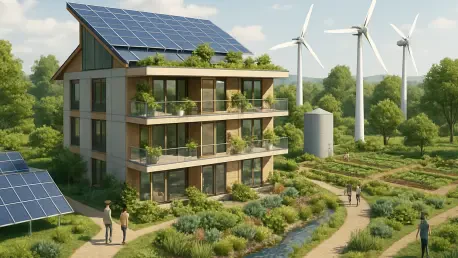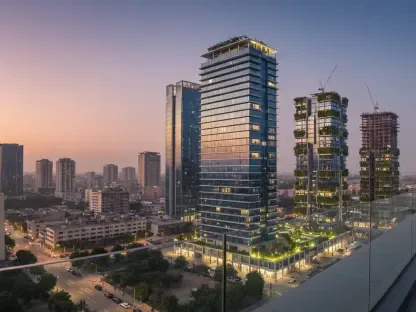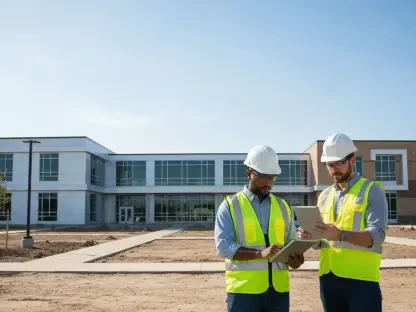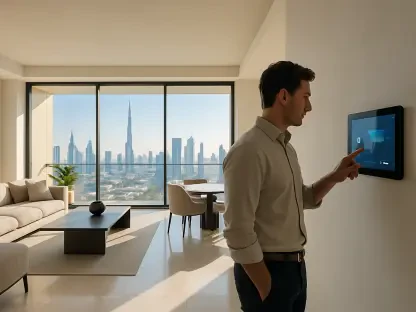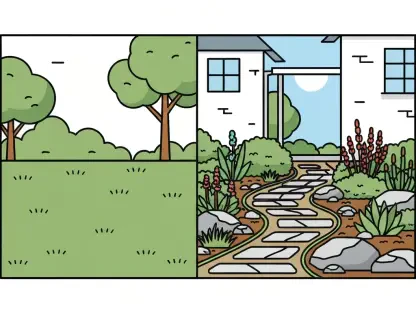In a world grappling with climate change and rapid urbanization, the Building Simulation 2025 (BS2025) conference, held from August 24–27 in Brisbane, Australia, emerged as a beacon of innovation for the global building performance simulation community. Organized by the International Building Performance Simulation Association (IBPSA), this biennial event, complemented by workshops on August 28, attracted over 400 speakers and a diverse array of in-person and online participants from countries spanning South Korea to the USA. The gathering united researchers, industry leaders, engineers, and students in a shared pursuit of leveraging simulation technology to create better, more sustainable built environments. With a near-equal gender balance and a notably young demographic, BS2025 reflected a field that is not only evolving but also embracing inclusivity. Far from being a mere academic exercise, this event buzzed with practical ideas and real-world applications aimed at addressing pressing global challenges. From cutting-edge tools to transformative research, attendees explored how simulation can redefine the way buildings are designed, operated, and integrated into broader systems. The conference served as a powerful reminder that buildings are more than physical structures—they are dynamic spaces that shape human lives and environmental outcomes.
Core Themes Shaping the Industry
The discussions at BS2025 crystallized around several pivotal themes that are steering the future of building performance simulation. Energy efficiency and net zero design dominated many sessions, as experts presented novel approaches to minimize energy consumption without compromising functionality. Urban-scale modeling also emerged as a critical focus, with conversations extending beyond individual structures to encompass city-wide strategies for climate resilience and policy-making. These topics highlighted a collective urgency to confront environmental challenges through innovative design and technology. The emphasis wasn’t solely on numbers or models but on creating tangible impacts that could redefine how societies interact with their built surroundings, pushing the boundaries of what simulation can achieve in a rapidly changing world.
Another significant theme was the human dimension of buildings, recognizing that structures are ultimately spaces for people. Sessions on occupant-centric design explored how simulations can optimize comfort while maintaining sustainability goals. Meanwhile, the social acceptance of emerging technologies was debated, underscoring that technological advancements must align with cultural and personal expectations to gain traction. The integration of artificial intelligence (AI), machine learning, and digital twins was frequently highlighted as a transformative force, offering new ways to enhance simulation accuracy and scalability. Additionally, climate resilience resonated strongly, with a clear focus on designing buildings capable of withstanding extreme weather patterns and adapting to long-term environmental shifts, ensuring safety and durability in an unpredictable future.
Breakthrough Research and Practical Solutions
BS2025 served as a platform for unveiling groundbreaking research that tackled some of the most urgent challenges in building performance. One remarkable presentation introduced photovoltaic vacuum glazing (PVVG), an innovative glass technology that combines insulation with power generation. Studies shared at the conference suggested that integrating PVVG into commercial buildings could reduce cooling demands by up to 91% under certain conditions, offering a payback period of just over seven years. This advancement pointed to a future where building materials themselves contribute to energy solutions, blending aesthetics with functionality. Such findings underscored the event’s commitment to fostering ideas that are not only visionary but also feasible for widespread adoption across diverse markets.
Equally compelling was a solution from China involving water spray systems for glass-roofed public buildings in hot-humid regions. By dispersing a fine mist over glass surfaces, solar radiation was significantly reduced, leading to cooler indoor environments by several degrees. While the approach faced challenges like water consumption due to evaporation, its simplicity and effectiveness sparked interest in its potential scalability to other climates and building types. These presentations exemplified a key strength of BS2025: the focus on actionable innovations that address real energy challenges. The emphasis on practical outcomes highlighted how simulation can bridge the gap between theoretical research and on-the-ground implementation, paving the way for more sustainable building practices globally.
Simulation for Social Good
Beyond technological feats, BS2025 illuminated the profound social and humanitarian potential of building performance simulation. A striking case study from rural China demonstrated how corn husks, a zero-waste material, could be used as insulation in uninsulated concrete homes. In regions where winter temperatures plummet below freezing, this low-cost intervention raised indoor warmth by several degrees, offering a lifeline to vulnerable communities. This example showcased how simulation can identify and validate simple, sustainable solutions that improve quality of life without requiring complex or expensive infrastructure, proving that innovation doesn’t always mean high-tech.
Another powerful application discussed was the use of simulation in repairing war-damaged structures. By employing disaster-response techniques such as drone-based building scans, researchers proposed methods to restore buildings without full reconstruction, potentially saving billions in costs while enhancing energy performance. This approach revealed simulation’s capacity to address urgent needs in conflict zones, where resources are scarce and rebuilding is a daunting task. These stories added a deeply human layer to the technical discussions at BS2025, illustrating that the field’s impact extends far beyond energy metrics or design efficiency—it can be a tool for equity and resilience in some of the world’s most challenging contexts, inspiring a broader perspective on the role of technology.
Fostering Connections and Collaboration
While the technical content at BS2025 was undoubtedly robust, the event’s networking opportunities proved equally vital to its success. Social functions such as the welcome reception, gala dinner, and farewell drinks created an environment where meaningful interactions flourished. Young professionals and students, in particular, benefited from connecting with seasoned industry leaders, gaining insights and forging relationships that could shape their careers. The blend of academic rigor and industry pragmatism during sessions fostered a unique dialogue, with lively question-and-answer exchanges revealing a shared passion for advancing the field through collaboration and diverse perspectives.
The value of these interactions extended beyond casual conversations, often sparking ideas for future partnerships and projects. Feedback from attendees highlighted the real-world focus of the presentations and the seamless integration of theoretical and practical viewpoints as standout features. These moments of connection, whether during formal sessions or informal gatherings, amplified the conference’s impact by ensuring that ideas didn’t remain confined to the event space. Instead, they laid the groundwork for ongoing collaboration across borders and disciplines, reinforcing BS2025 as a catalyst for collective progress in building simulation and a reminder of the power of community in driving innovation.
Visionary Perspectives from Thought Leaders
Keynote addresses at BS2025 provided a high-level framework that shaped much of the event’s discourse. One speaker emphasized the critical role of communication in ensuring that simulation advancements resonate with stakeholders and the public, arguing that even the most revolutionary ideas fall flat without clear storytelling. This perspective challenged attendees to refine how they present complex data, making it accessible to policymakers, clients, and communities who ultimately influence implementation. The call for effective communication added a strategic dimension to the technical focus, urging a balance between innovation and outreach.
Another thought-provoking address advocated for a systems-level approach, linking individual buildings to broader urban and energy networks. The speaker highlighted the importance of occupant comfort in energy performance strategies and explored how coordinated building portfolios could support demand response initiatives. This holistic viewpoint pushed for city-scale modeling to uncover trade-offs in climate policy often missed at smaller scales. Such insights inspired attendees to think beyond isolated projects and consider the interconnected nature of modern built environments, reinforcing that simulation must address systemic challenges to create meaningful, lasting impact in an increasingly complex world.
Emerging Trends and Collective Insights
Several overarching trends surfaced at BS2025, reflecting both optimism and a grounded realism about the field’s future. A strong consensus emerged around the urgency of achieving net zero goals through simulation-driven design, though this ambition was tempered by the need to balance energy efficiency with occupant well-being and practical application. AI, machine learning, and digital twins were widely regarded as transformative, with the potential to refine simulation precision and expand its scope. However, concerns about data integrity and ethical implications were acknowledged as hurdles that must be navigated carefully to ensure responsible adoption.
Additionally, there was a clear shift toward viewing simulation not just as a tool for single buildings but as a means to understand broader urban and systemic impacts. This perspective aligned with growing calls for interdisciplinary approaches that integrate social, environmental, and technical factors. The importance of performance rating systems as drivers of measurable improvement was also a recurring theme, with many attendees eager to adapt successful frameworks to their own regions. These trends painted a picture of a field poised for growth, yet mindful of the barriers—such as cost, public acceptance, and real-world discrepancies—that must be addressed to fully realize simulation’s potential.
Identifying Challenges and Opportunities
BS2025 also shed light on critical gaps in current simulation practices that present opportunities for future focus. One notable oversight discussed was the lack of integration of air filtration in energy models, despite its significant contribution to carbon emissions. Addressing this could lead to more comprehensive frameworks that guide better decision-making in building design and operation. This gap highlighted the need for simulation to evolve into a more holistic tool, capturing often-ignored variables that impact both environmental and human health outcomes in profound ways.
Equally important was the recognition of social acceptance as a barrier to technology deployment. While cutting-edge solutions may excel in performance, their success often hinges on public familiarity and cultural alignment. This insight urged the simulation community to prioritize user perspectives alongside technical metrics, ensuring that innovations resonate with those who will ultimately use them. BS2025 reinforced that the field’s true strength lies in translating theoretical insights into actionable outcomes, focusing on impactful results rather than getting lost in minor details, and fostering a mindset of strategic problem-solving.
Moving Forward with Purpose
Reflecting on BS2025, held in Brisbane, the event stood as a defining moment that united a global community around the transformative power of building performance simulation. Keynote speeches, innovative research presentations, and vibrant networking opportunities illuminated key challenges and solutions, from energy efficiency to humanitarian applications. The conference tackled pressing themes like AI integration, urban-scale impacts, and occupant-centric design, while showcasing practical breakthroughs that could reshape the industry. It was a testament to the field’s potential to drive sustainability and resilience through thoughtful, simulation-based strategies. Looking ahead, the insights gained call for a renewed commitment to interdisciplinary collaboration, clear communication, and a focus on real-world impact. The challenge now lies in translating these ideas into actionable steps—whether through policy advocacy, technology refinement, or community engagement—to ensure that the built environment evolves in harmony with both planetary and human needs.
